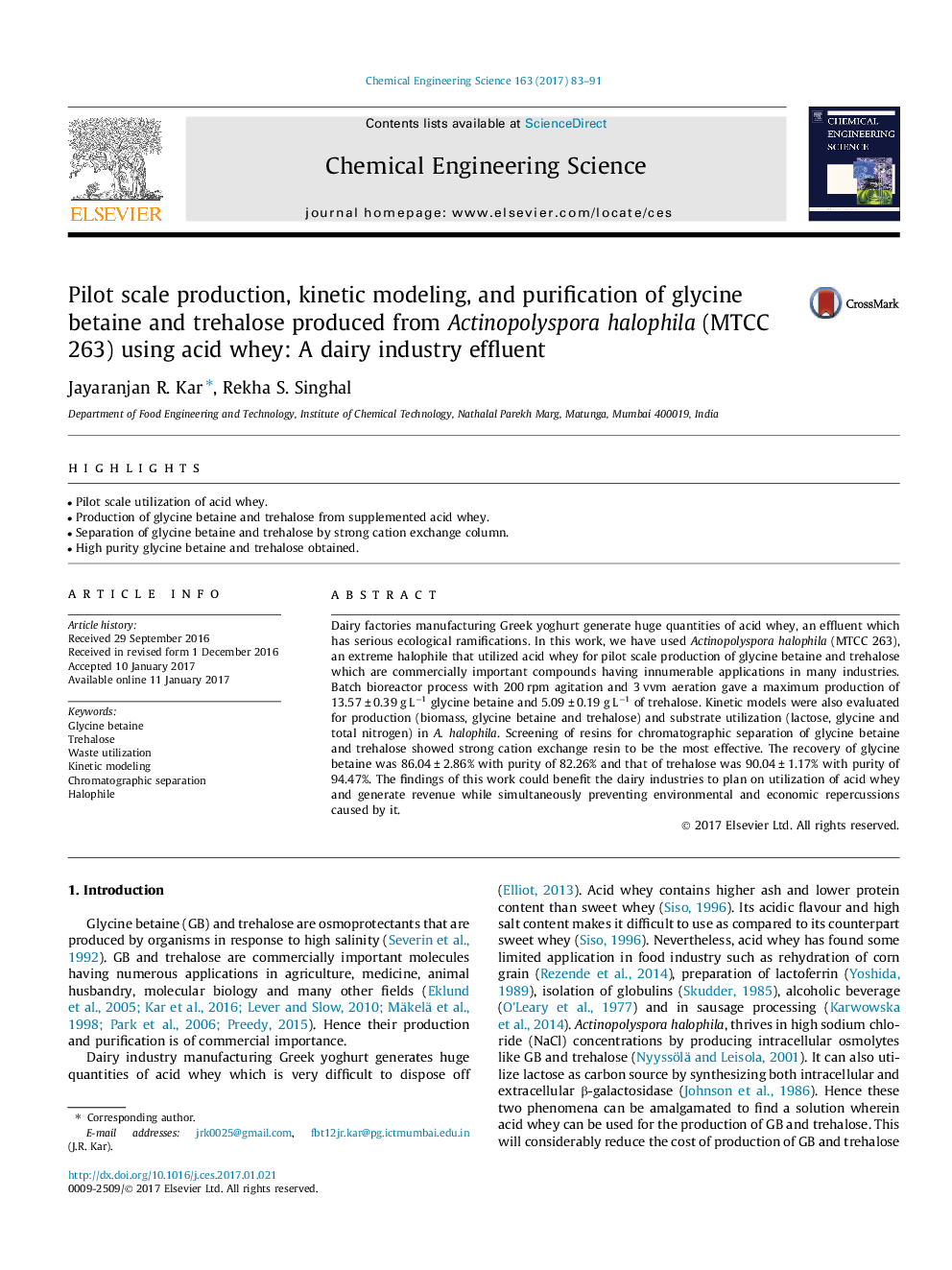| Article ID | Journal | Published Year | Pages | File Type |
|---|---|---|---|---|
| 6467572 | Chemical Engineering Science | 2017 | 9 Pages |
â¢Pilot scale utilization of acid whey.â¢Production of glycine betaine and trehalose from supplemented acid whey.â¢Separation of glycine betaine and trehalose by strong cation exchange column.â¢High purity glycine betaine and trehalose obtained.
Dairy factories manufacturing Greek yoghurt generate huge quantities of acid whey, an effluent which has serious ecological ramifications. In this work, we have used Actinopolyspora halophila (MTCC 263), an extreme halophile that utilized acid whey for pilot scale production of glycine betaine and trehalose which are commercially important compounds having innumerable applications in many industries. Batch bioreactor process with 200 rpm agitation and 3 vvm aeration gave a maximum production of 13.57 ± 0.39 g Lâ1 glycine betaine and 5.09 ± 0.19 g Lâ1 of trehalose. Kinetic models were also evaluated for production (biomass, glycine betaine and trehalose) and substrate utilization (lactose, glycine and total nitrogen) in A. halophila. Screening of resins for chromatographic separation of glycine betaine and trehalose showed strong cation exchange resin to be the most effective. The recovery of glycine betaine was 86.04 ± 2.86% with purity of 82.26% and that of trehalose was 90.04 ± 1.17% with purity of 94.47%. The findings of this work could benefit the dairy industries to plan on utilization of acid whey and generate revenue while simultaneously preventing environmental and economic repercussions caused by it.
